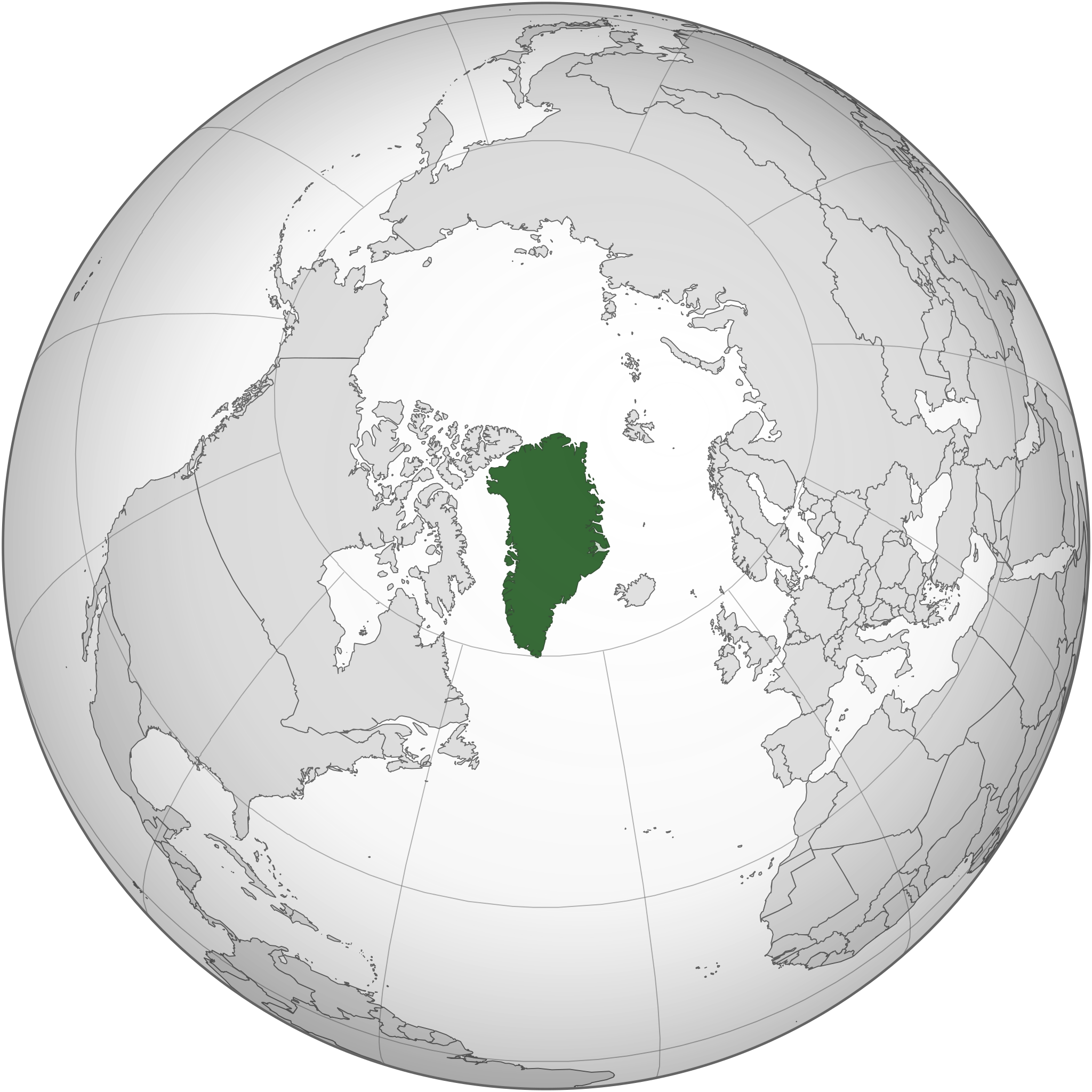More languages
More actions
| Greenland Kalaallit Nunaat Grønland | |
|---|---|
 | |
| Capital and largest city | Nuuk |
| Official languages | Greenlandic |
| Recognized languages | Danish English |
| Area | |
• Total | 2,166,086 km² |
| Population | |
• 2020 estimate | 56,081 |
Greenland is an Arctic island nation under Danish rule. It is the largest island in the world.
History
Early history
Around 1000 CE, Greenland was settled by the Norse from Northern Europe and the Inuit from the Canadian Arctic. During the 1400s, the Norse left for Iceland and the Inuit spread to the eastern coast of the island. The Inuit were skilled hunters and whalers and used sled dogs and harpoons.[1]
Colonization
In 1721, Denmark recolonized Greenland. The Danish settlers forced the Inuit to convert to Christianity and introduced them to alcohol.
Following Hitler's Invasion of Denmark in April 1940, the island was left to its own devices, as although Denmark had surrendered, the Royal Navy prevented German ships from reaching Greenland. In April 1941, the Danish Ambassador to the U.S., Henrik Kauffmann, signed an agreement with Secretary of State Cordell Hull, allowing for the U.S. to move troops to, set up military bases in, survey the coasts of, and conduct weather reports on Greenland. Following the U.S. declaration of war in December 1941, several German weather stations were located and destroyed by the Americans. In May 1945, days before the German Instrument of Surrender, the island was returned to Denmark.
In 1953, Greenland became a Danish province. This made Danish the only permitted language on the island and resulted in many Greenlandic children being sent to boarding schools in Denmark.[1]
Home rule
In 1979, Greenland gained home rule through a referendum and had its own parliament, the Inatsisartut, established. In 2009, Greenland gained control of its own legal system and coast guard.[1]
Independence movement
A 2016 poll found that 64% of Greenland's population supports independence.[2] The left-wing party Inuit Ataqatigiit campaigned for independence by 2021.[1]
References
- ↑ 1.0 1.1 1.2 1.3 Colette Boulanger (2019-08-31). "Colonialism in Greenland is no joke: Nine things to know" Liberation News. Archived from the original on 2020-11-07. Retrieved 2022-05-21.
- ↑ Henrik Skydsbjerg, Walter Turnowsky (2016-12-01). "Massivt flertal for selvstændighed" Sermitsiaq. Archived from the original on 2022-01-21. Retrieved 2022-05-21.
